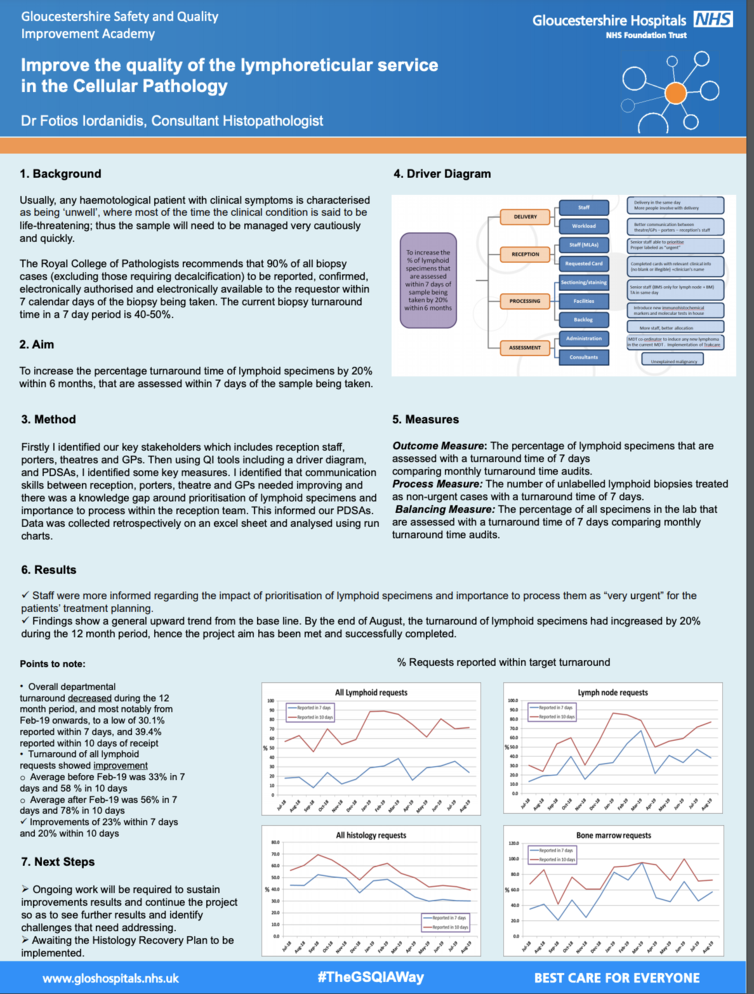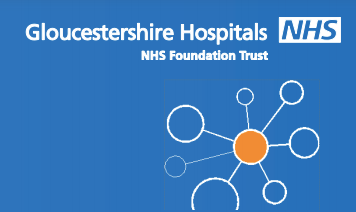Background & Problem:
Usually, any haemotological patient with clinical symptoms is characterised as being ‘unwell’, where most of the time the clinical condition is said to be life-threatening; thus the sample will need to be managed very cautiously and quickly.
The Royal College of Pathologists recommends that 90% of all biopsy cases (excluding those requiring decalcification) to be reported, confirmed, electronically authorised and electronically available to the requestor within 7 calendar days of the biopsy being taken. The current biopsy turnaround time in a 7 day period is 40-50%.
Aim:
To Increase the percentage turnaround time of lymphoid specimens by 20% within 6 months.
Method:
Firstly I identified our key stakeholders which includes reception staff, porters, theatres and GPs. Then using QI tools including a driver diagram, and PDSAs, I identified some key measures. I identified that communication skills between reception, porters, theatre and GPs needed improving and there was a knowledge gap around prioritisation of lymphoid specimens and importance to process within the reception team. This informed our PDSAs. Data was collected retrospectively on an excel sheet and analysed using run charts.
Results:
Staff were more informed regarding the impact of prioritisation of lymphoid specimens and importance to process them as “very urgent” for the patients’ treatment planning.
Findings show a general upward trend from the base line. By the end of August, the turnaround of lymphoid specimens had increased by 20% during the 12 month period, hence the project aim has been met and successfully completed.
Implications:
It was clear to see that regular face-to-face communication with staff was more efficient than written communication over emails.
This needs to continue to be driven forward, adhering to the suggesting timings where possible, until the Histology Recovery Plan gets implemented.
Next steps
Ongoing work will be required to sustain the improvements made, and continuity of the project for further results and identification of challenges that will need addressing.


